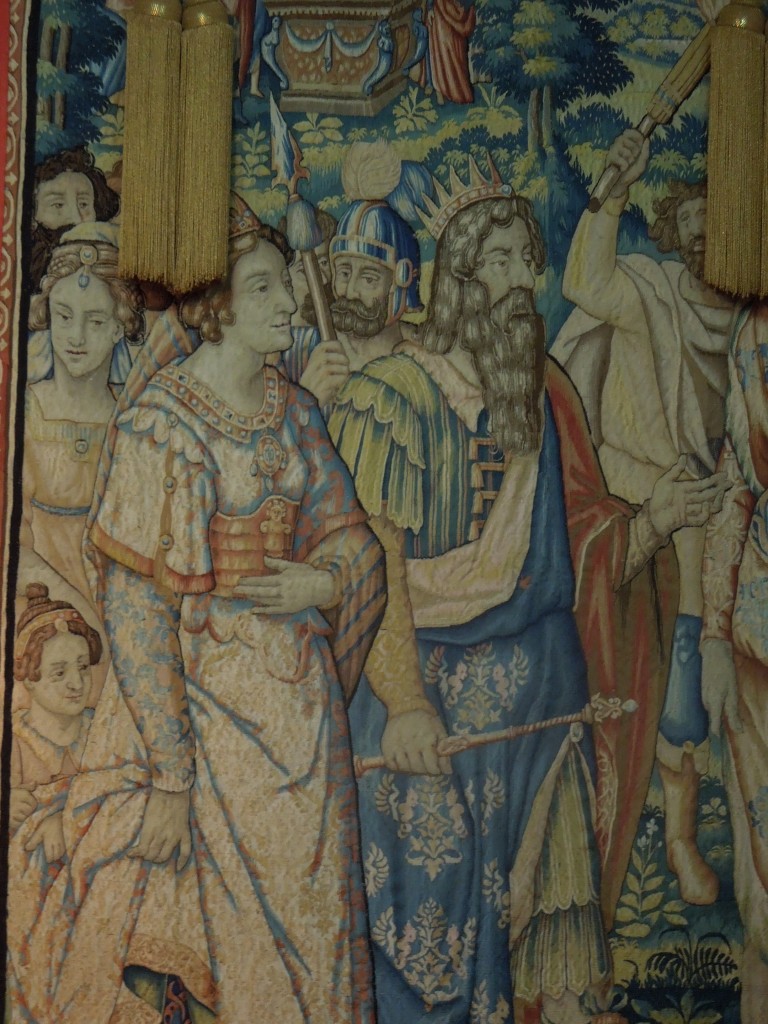
One of the tapestries that adorn the floats in the Gion parade – but what's with the Western faces??
The last evening before the parade – known as yoiyama – is traditionally the biggest in terms of crowds, with many staying up all night. It’s the last chance to view all the many displays and in the early morning to see the removal of decorations onto the floats themselves. There are 32 floats in all, each with its own particular history, and the parade begins promptly at 9.00 am on the 17th.
What’s interesting is how much religious worship is going on amidst all the high-spirited revelry. Good luck charms are on sale everywhere, and people stopped to give money and pray to the objects that were waiting to be mounted onto the floats. I even saw one woman pray towards one of the floats and bow respectfully.
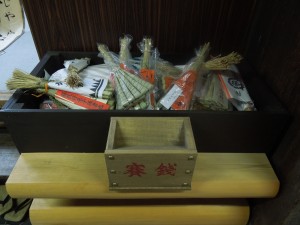
Box to collect last year's protective charm (chimaki), hung on house doors for a year. Each float's charm has a different purpose, that of the Koi yama being for advancement in life.
One of the most interesting floats I came this year was the Koi-yama, which features a large carp jumping up the Ryumon (Dragon Gate) Falls. It’s based on an old Chinese legend thatif a fish successfully swims up the falls on the Yellow River, it will turn into a dragon. The white hemp tassel hanging beside the carp symbolises the falls, while all the railings and metalwork are in wave patterns.
The front of the float has a red Torii gate, and toward the back of the boat is a small shrine dedicated to Susanoo-no mikoto, god of storms (enshrined at the sponsoring shrine of Yasaka Jinja, aka Gion sha).
The extraordinary fabrics which decorate the float used to be a single large tapestry made in Belgium in the 16th century. It shows a scene from the Iliad, featuring King Prismos and Queen Hekabe. According to an expert, it’s the only one of its kind that was produced in Belgium; how extraordinary that the Greek epic should find itself adorning a Shinto religious festival!
The supposition is that the tapestry was brought to Japan by Hazekura Tsunenaga, an envoy of Date Masamune who visited Europe 1613-1620. While there, he met with Philip III of Spain and the pope in Rome, who may have presented him with the tapestry. By the time that Hazekura returned to Japan, Christianity had been banned and his contacts considered suspicious. The tapestries had to be secreted away – but how on earth did they end up on a Gion float? Given the Shinto nature of the festival, and the hatred with which the authorities regarded Christianity, it seems quite extraordinary….
Presumably one of the wealthy Kyoto merchants obtained the tapestry, and at some point it was decided the large tapestry should be cut up into portions and given Japanese motifs on either side, to make it more festival-like. The result is an odd mix of West and East, as mythological dragons are displayed either side of Greek and Trojan figures.
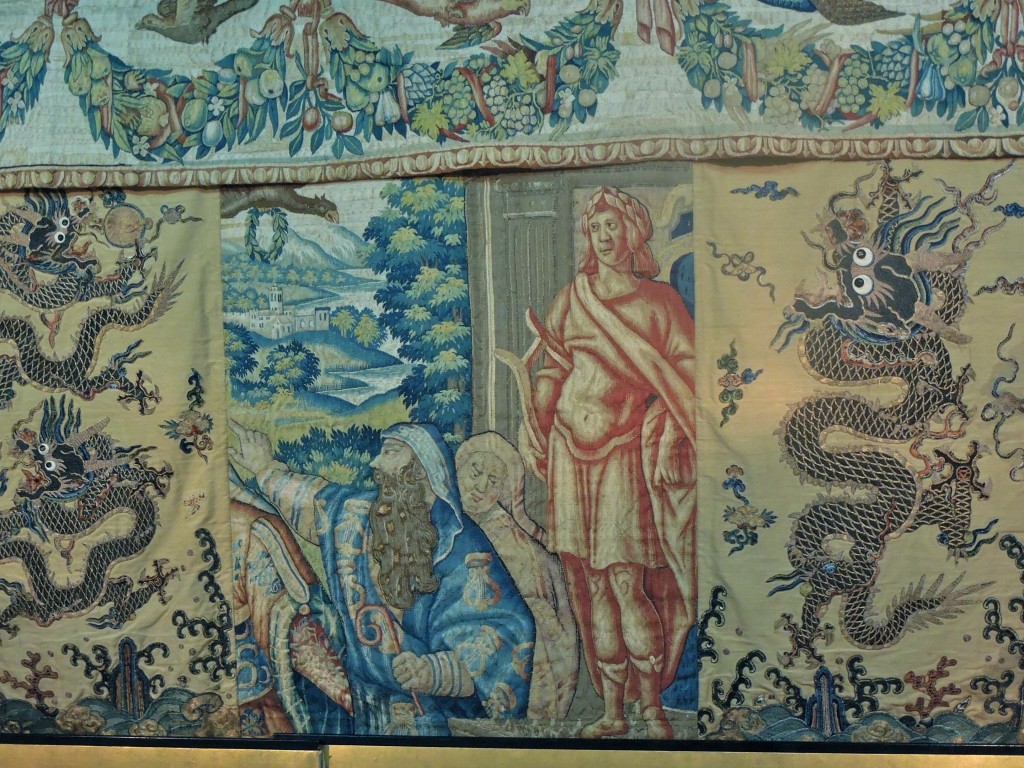
A piece of the Belgian tapestry with dragon snakes attached on either side
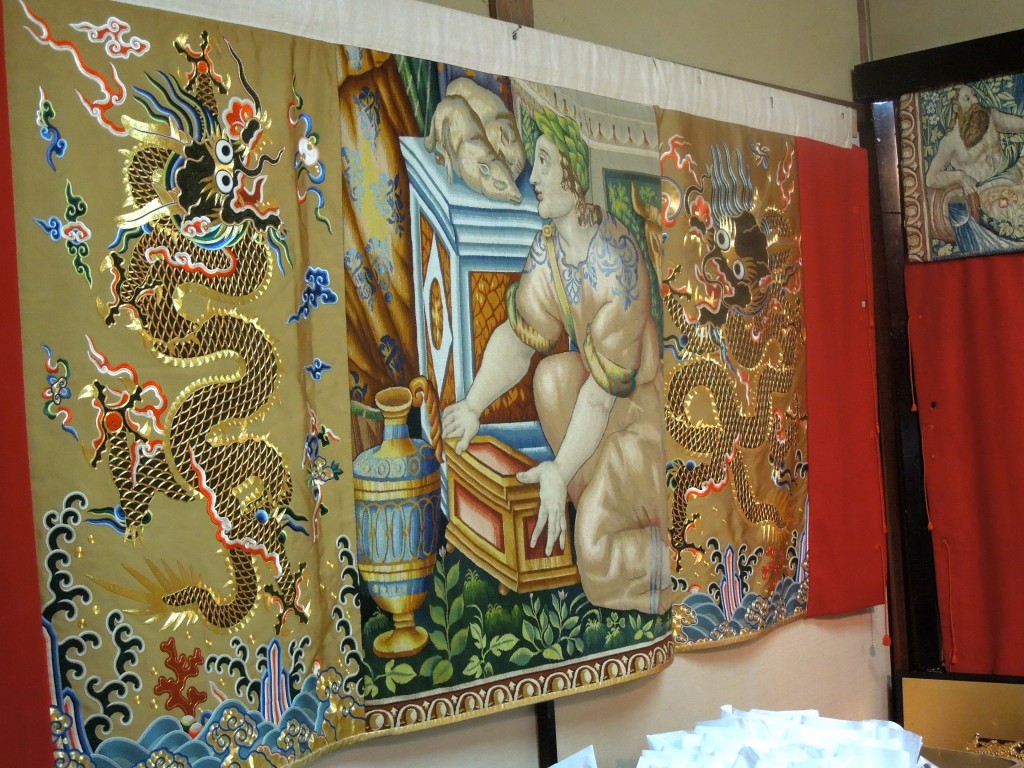
East meets West in close juxtaposition. Scenes from the Iliad mixed with Chinese folklore (a modern copy of the original)
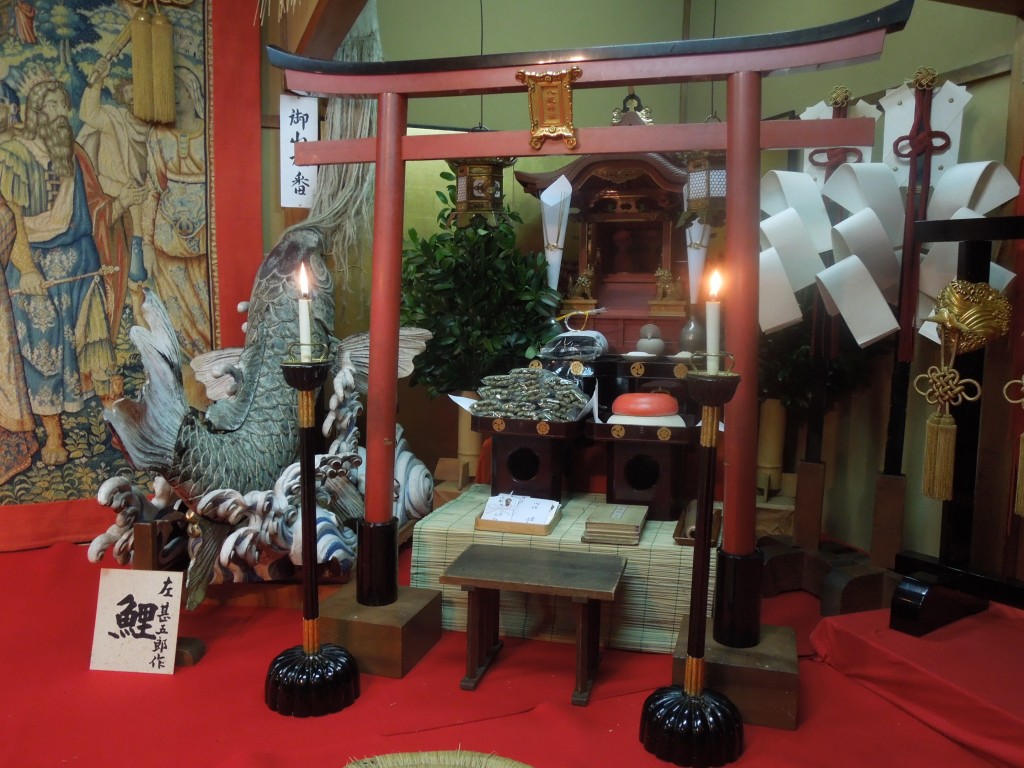
The float's contents of shrine and carp are displayed in a house next to the float before being mounted prior to the procession. The float's main theme of a carp swimming vigorously upstream to become a dragon is undoubtedly Chinese in origin, while the torii is decidedly Japanese, mixed interculturally with the Western faces on the float's tapestry hangings.

Leave a Reply